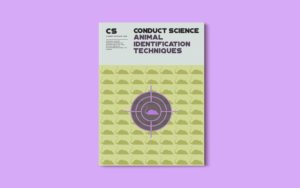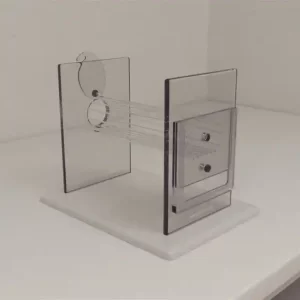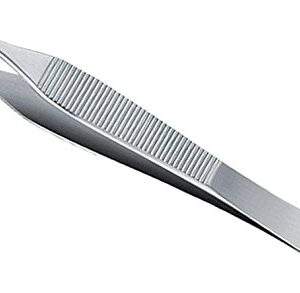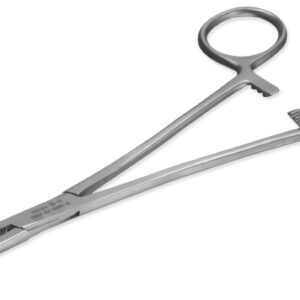Digital Microscopes: An Overview
From full-size units to pocket models, microscopes are complex tools that facilitate the analysis of small objects and structures across various settings, such as medicine, education, engineering, and manufacturing.
Microscopes are based on the phenomenon of magnification, highly valued in the ancient world. Note that it was in the 13th century when the first pair of corrective eyeglasses were invented.
Three centuries later, the interest in lens technology and the remarkable work of spectacle-makers Hans Jansen, Zacharias Jansen, and Hans Lippershey led to the development of the first compound microscope.
Microscopy was slowly launched as a separate field of research followed by the inventions of notable scientists, such as Robert Hooke, Antonie van Leeuwenhoek, and Robert Brown.
With the advancements in digital technology, microscopes have evolved remarkably, and digital microscopes have become essential tools in research and practice. Interestingly, the first digital model was created in 1986 by the Japanese company Hirox Co. Ltd.
The original model was a simple control unit connected to a computer via an S-video connection, which was later changed to a Firewire 800 connector.
In the early 2000s, the company released innovative units with build-in monitors. In 2015, Hirox Co. Ltd. introduced another digital model connected to a computer by USB 3.0, taking advantage of the benefits of USB connectivity.
Purchasing a Microscope: How to Choose a Digital Unit
Given the increasing interest in lens technology and scientific research, reputable vendors, such as OMAX, AmScope, Zeiss, Celestron, and Leica, offer a wide variety of advanced digital units.
Note that both hobbyists and microscopists should consider three major factors when purchasing a digital microscope:
- Research requirements
- Specifications
- Total cost
Research requirements: Different research objectives require different types of microscopes. For example, compound microscopes are optical microscopes that can be used for the analysis of small and transparent specimens, while stereo units can facilitate the examination of opaque objects.
Digital microscopes, on the other hand, can be used to capture, modify, and store images (including videos and measurements) on a computer or another external device.
As digital units display the image on a screen, the ergonomics of using digital microscopes are highly beneficial, eliminating eye and neck strain. Moreover, digital tools are highly recommended for audience and conference viewing.
Given the benefits of digital microscopes, it’s no surprise there’s a wide range of models, such as biological, polarizing, stereo, compound, phase, inverted, USB, handheld, and portable digital models.
Handheld digital microscopes, in particular, are popular tools as they are easy to use and hold, which makes them ideal for fieldwork and forensics.
Specifications: Magnification and resolution are two of the main specifications that users should consider before purchasing a microscope.
Note that in optical microscopy, magnification is determined by multiplying the eyepiece magnification by the lens magnification. When it comes to digital units, additional factors to consider are the camera’s memory, connectivity, and resolution.
Here we should note that digital microscopes are defined as optical microscopes with a connected camera, allowing images to be displayed either on an LCD screen or a monitor (computer monitor, HDMI monitor). Some models are equipped with a camera; others come with a detachable camera.
Total cost: Depending on the optical and digital quality of the units, total costs can vary significantly. Interestingly, top-notch companies, such as AmScope, OMAX, Zeiss, and Celestron, may offer better quality, shipping, and return policies.
Note that most digital models include software that runs on a computer (allowing video recording, measuring, and photo editing), which can increase the price of the unit. Additionally, software updates should be considered.
Best Digital Microscopes
Digital microscopes are popular tools for inspection, documentation, and analyses in production, quality control, failure analysis, teaching, research, and development, as well as forensics.
Digital microscopes are also valued in the field of life sciences; for example, earscopes are popular units in the field of otology. Based on different specifications and user reviews, here’s a list of the best digital microscopes on the market:
1. Best Full-size Digital Microscopes:
Given the wide variety of models, vendors, and applications, choosing a digital microscope can be challenging. The full-size units provide high magnification, resolution, and advanced settings.
1.1. Digital Compound Microscope: Compound microscopes are ideal for the analysis of small specimens with some degree of transparency. Note that compound microscopes provide high magnification by utilizing two sets of lenses.
Such microscopes allow users to study both stained slides (e.g., negative stained bacteria, blood) and unstained wet mounts (e.g., pond water, metazoans). Some of the best digital compound units include:
1.1.1. AmScope M158C-SP14-E 40X-1000X Biology Science Metal Glass Student Microscope with USB Digital Camera and Slide Preparation Kit
AmScope M158C-SP14-E 40X-1000X Biology Science Metal Glass Student Microscope with USB Digital Camera and Slide Preparation Kit is an advanced compound microscope equipped with five magnification settings, a LED illumination system, and a digital camera.
The unit comes with biological-specimen slides, a slide-preparation kit, and various tools, which makes AmScope M158C-SP14-E 40X-1000X Microscope an ideal digital unit for both academics and hobbyists.
1.1.2. AmScope T690C-PL-10M 40X-2500X Achromatic Microscope
AmScope T690C-PL-10M 40X-2500X Achromatic Microscope offers a magnification of 40X-2500X, a Kohler halogen illumination system, and a 10MP digital camera.
With numerous sophisticated features, AmScope T690C-PL-10M 40X-2500X is a superb compound microscope, which can be used in research and clinical settings.
1.1.3. OMAX 40X-2500X Full-Size Lab Digital Trinocular Compound LED Microscope
OMAX 40X-2500X Full-Size Lab Digital Trinocular Compound LED Microscope is one of the most powerful compound microscopes on the market.
With magnification levels from 40X to 2500X and a 14MP USB digital imaging system, the unit facilitates image capturing, video recording, as well as specimen analysis.
Note that the software is compatible with Windows XP/Vista/7/8/10, Mac OS, and Linux operating systems. OMAX 40X-2500X Full-Size Lab Digital Trinocular Compound LED Microscope is an ideal instrument for examination, research, and teaching.
2. Digital Stereo Microscopes:
Stereo microscopes, also known as stereoscopic or dissecting microscopes, are often used for dissection, fractography, manufacturing, forensics, and watch-making.
Note that stereo microscopes are ideal for the analysis of solid and opaque objects or specimens too big for a compound microscope. Popular digital stereo units include:
1.2.1. OMAX 20X-40X-80X Cordless Binocular Microscope
OMAX 20X-40X-80X Cordless Dual LED Lights Stereo Binocular Microscope with USB Digital Camera (OMAX CS-G223E) is a sophisticated binocular LED unit. It can be powered by 110V power supplies or batteries, which makes the microscope usable in outdoor settings.
The unit comes with a USB digital imaging system on one of the eyepieces; the included software is compatible with Windows XP/Vista/7/8/10 and Mac OS. OMAX 20X-40X-80X Cordless Binocular Microscope is ideal for analyzing coins, stamps, rocks, insects, and plants.
1.2.2. OMAX 3.5X-90X USB3 18MP Digital Trinocular Zoom Stereo Microscope
OMAX 3.5X-90X USB3 18MP Digital Trinocular Zoom Stereo Microscope is equipped with a rotatable trinocular head, a stable desk stand, and an 18MP USB 3.0 camera. Note that the software is compatible with Windows, Mac OS X, and Linux operating systems.
OMAX 3.5X-90X USB3 Digital Trinocular Zoom Stereo Microscope is one of the most powerful stereo microscopes on the market, which can benefit watch-making, electronics, and biological research.
1.2.3. AmScope SM-4TZ-144A Professional Trinocular Stereo Microscope
AmScope SM-4TZ-144 Professional Trinocular Stereo Zoom Microscope is one of the most advanced stereo microscopes. The unit is equipped with a rotatable head and a double-arm boom stand.
Note that the vertical trinocular port can be converted into a C-Mount or 23mm photo port (the camera is sold separately).
With its complex configurations, AmScope SM-4TZ-144A Professional Trinocular Stereo Microscope is one of the highest-rated dissecting tools used in microscopy.
2. Best Portable and Handheld Microscopes with USB Connectivity:
Portable microscopes differ in design and optical capabilities. Note that full-size microscopes with magnification ranging from 40X to 1000X powered by batteries are sometimes considered portable. Portable and lightweight units are versatile and facilitate analyses in outdoor settings.
Handheld or pocket microscopes, on the other hand, are popular portable units that are compact, easy to use, and affordable. Here are some of the most popular USB portable and handheld units:
2.1. Dino-Lite USB Digital Microscope AM7115MZT Magnification
Dino-Lite USB Digital Microscope AM7115MZT Magnification provides crisp imaging and measurement options. The unit comes with advanced optics, LED controls, a 5MP sensor, and USB 2.0 connectivity.
The following save formats are available: BMP, GIF, PNG, JPG, TIF, PNM, TGA, as well as video save formats: WMV, FLV, and SWF.
Note that the operating system is compatible with Windows XP/Vista/7/8/10, and Mac OS 10.5. With advanced options, Dino-Lite USB Digital Microscope AM7115MZT is one of the most sophisticated digital microscopes on the market.
2.2. Opti-Tekscope Digital USB Microscope Camera – Advanced CMOS Sensor
Opti-Tekscope Digital USB Microscope Camera – Advanced CMOS Sensor is a versatile product that can be used as a microscope, an endoscope, and a USB camera.
The unit provides a magnification rate of up to 200X, eight LEDs, and a CD-ROM disk compatible with Windows and Mac OS.
Opti-Tekscope Digital USB Microscope Camera – Advanced CMOS Sensor is a great tool for the analysis of stamps, coins, living specimens, and printed circuit boards.
2.3. Plugable USB 2.0 Digital Microscope with Flexible Arm Observation Stand
Plugable USB 2.0 Digital Microscope with Flexible Arm is a powerful unit with magnifications of up to 250X (note that the final magnification corresponds to the monitor size). The tool is equipped with an LED halo light system.
Additionally, this model comes with a flexible arm and a pad with graduated marks for measurement. With a wide range of features, Plugable USB 2.0 Digital Microscope with Flexible Arm is a popular microscope ideal for both experts and beginners.
2.4. Celestron 44308 5 MP Handheld Digital Microscope Pro
Celestron 44308 5 MP Handheld Digital Microscope Pro is an easy-to-use portable unit, which provides magnification powers from 20X to 200X. The model comes with a 5MP sensor, LED illumination, and a USB 2.0 cable.
Additionally, the microscope has an adjustable height stand with a calibration rule. Celestron 44308 5MP Handheld Digital Microscope Pro includes micro capture pro software to create images, VGA videos, time-lapse animations, and measurements, which makes it ideal for industrial quality control, component inspection, medical investigation, and forensic documentation.
2.5. Firefly GT800 Digital 2Mp Jewelry Gemology
Firefly GT800 Digital 2Mp Jewelry Gemology is another advanced handheld digital units. It has 15X-230X native optical magnification and 15X-700X digital magnification. The unit comes with a stand, multi-layer glass lenses, and software bundled with the microscope.
Note that the software is compatible with Windows 7/Vista/XP. Firefly GT800 can be used for textile inspection, detailed repair, printing inspection, and living creature examination.
3. Best Wi-Fi Digital Microscopes:
While USB digital microscopes are among the most powerful and popular units, wireless models – with wireless connections and dedicated applications or software – are also becoming popular instruments in research and practice.
Note that before purchasing a Wi-Fi unit, users should check if their connection is compatible with the module (a 2.4 GHz module or a 5.0 GHz module). Advanced Wi-Fi digital units include:
3.1. ProScope Mobile Wi-Fi Wireless Handheld Digital HR Microscope
ProScope Mobile Wi-Fi Wireless Handheld Digital HR Microscope is a complex tool designed specifically for iPad, iPhone, and iPod touch. It allows the simultaneous processing of live videos and capture stills on up to 253 devices.
The unit has 0X-10X and 50X lenses and allows a variety of lens magnifications (from 0-10X, 30X, 50X, 100X, 200X, and 400X). Proscope Mobile Wi-Fi Wireless Handheld Digital HR is ideal for law enforcement, crime scene investigation, education, fire investigations, and medicine.
3.2. Mustcam 720P HD Wifi Digital Microscope
Mustcam 720P HD Wi-Fi Digital Microscope is another popular unit that requires a wireless connection.
Note that this microscope allows magnification of up to 200X and is compatible with iOS/Android and PC. With advanced settings, Muscat 720P HD Wi-Fi Digital Microscope is ideal for both beginners and experts.
3.3. Wireless Digital Microscope Rotek 50X and1000X Magnification
Wireless Digital Microscope Rotek 50X and1000X Magnification has a 2.0MP camera with 1080P resolution, which offers clear and high-quality images. The unit provides 8 LED lights and magnification power from 50X to 1000X.
Note that the best focal images distance is 3-60mm; the unit requires a wireless connection of 10M. Wireless Digital Microscope Rotek 50X and 1000X Magnification is a popular model, which comes with a stand and allows 3-hour work on a full charge.
4. Best Digital Microscopes with LCD:
Digital units with an LCD screen are sophisticated tools that do not require the unit to be connected to an external device.
Such digital instruments display the image on an LCD screen, which improves ergonomics and eliminates eye and neck strain. Thus, these microscopes are highly recommended for teaching and conference viewing. Here are some of the best digital tools with an LCD screen:
4.1. Opti-Tekscope OT-M HDMI Microscope Camera – True Digital HD
Opti-Tekscope OT-M HDMI Microscope Camera – True Digital HD is a powerful unit, which provides high definition (1920x1080P).
With its 3.0 LCD screen (960×240), high-quality non-interpolated CMOS sensor, 4X digital zoom, dual led lighting, and an industrial stand, the unit is ideal for the analysis of coins, stamps, and rocks.
Note that Opti-Tekscope OT-M HDMI Microscope Camera – True Digital HD has both HDMI and mini USB outputs to facilitate data sharing and analysis.
4.2. Koolertron LCD Digital Microscope USB Magnifier with Flat Base
Koolertron LCD Digital Microscope USB Magnifier with Flat Base is another popular tool, which comes with a 4.3 inches display and an adjustable stand.
The unit is equipped with eight LEDs and provides 1X-600X magnification. With its advanced features, the Koolertron LCD Digital Microscope USB Magnifier with Flat Base can be used in a variety of settings, including educational settings.
4.3. Koolertron LCD Digital Microscope with 5MP Image Sensor
Koolertron LCD Digital Microscope with 5MP Image Sensor is a digital tool equipped with a color LCD screen (3.5 inches) and a camera (5MP). The unit provides magnification within 20X and 300X and can work with both PC and TV.
Note that the software is compatible with Windows XP SP2/Vista/7/8/10, Mac OS 10.5 or above. Koolertron LCD Digital Microscope with 5MP Image Sensor can be used for different research objectives, such as stamps inspection, observation, and jewelry.
5. Best Digital Microscopes for Children:
Given the importance of digital technology in everyday life, it’s no surprise digital microscopes are an ideal gift for children and students who are used to observing images on a screen.
In fact, digital microscopes are highly popular within educational and home settings as they enhance interactivity and allow the inspection of different specimens, including skin, animals, plants, and jewelry. Some of the great digital tools suitable for children and young learners are:
5.1. Learning Resources Zoomy 2.0 Handheld Microscope
Learning Resources Zoomy 2.0 Handheld Microscope is an egg-shaped microscope that can be positioned in any angle over objects. The unit provides 54X magnification and high resolution (1600×1200).
It can be plugged directly into a computer, projector, or interactive whiteboard. Note that the software is compatible with Mac and PC (XP/Vista/Windows 7/10) and is automatically recognized as a USB device.
With advanced features, Learning Resources Zoomy 2.0 Handheld Microscope is an appealing microscope for young learners.
5.2. My First Lab STEM Mini Inspector – Microscope for Smartphones
My First Lab STEM Mini Inspector – Microscope for Smartphones and Tablets is a popular digital tool that can turn smartphones and tablets into powerful microscopes.
The unit comes with forensic UV and LED light settings and is perfect for classrooms and home use. Note that My first Lab STEM Mini Inspector is a great scientific gift for children over 6 years.
Taking Care of Microscopes
Digital microscopes are popular tools in the field of microscopy, which can facilitate quality inspection, teaching, forensics, medical research, and jewelry analysis.
While choosing a digital microscope can be a tricky task, taking care of the unit is also essential to guarantee a long life and accurate employment.
- Handling the unit: One of the main rules to keep microscopes intact is to handle the unit accordingly. Full-size instruments, for instance, should be held by their base and support arm. Portable and handheld units, on the other hand, may require a flat surface to provide stability and accurate data. Additionally, the lenses need special care; they should be kept away from sharp objects or immersion oil.
- Cleaning the unit: Cleaning the unit is essential. Note that solvents are not recommended, and lenses should be cleaned only with lens paper or wipes for cleaning.
- Storing the unit: Digital microscopes should be stored accordingly. To provide an example, full-size instruments should be stored in dust covers.
- Maintaining the unit: Although each microscope requires a different level of expertise and practice, users (both beginners and experts) should always consult both manuals for adjustments and instructions for use. Note that annual maintenance checks are also essential.
Digital Microscopes: Conclusion
Digital microscopes are versatile tools that can provide a variety of magnification ranges, connectivity options, and optical configurations. Digital microscopes are increasing in popularity in different fields, such as teaching, medicine, research, forensics, and quality inspection.
Choosing a digital microscope, however, is hard. While full-size units provide high-quality images and magnification, handheld units benefit fieldwork as they are easy to carry.
Units with an LCD screen, on the other hand, improve ergonomics, facilitate conference viewing, and are ideal for young learners.
Note that research requirements, specifications, and total costs are three of the main factors users should consider before buying a digital unit. Additionally, the camera’s memory, resolution, and connectivity (wireless, USB, HDMI) should be considered.












